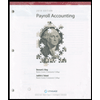A lawyer allocates overhead costs based on his hours working with different clients. The lawyer expects to have $200,000 in overhead during the year and expects to work on clients' cases 2,000 hours during the year. In addition, she wants to pay herself $50 per hour for working with clients. In other words, the lawyer's billing rate is the sum of her hourly fee ($50) and a fee to recover the expected overhead spread over 2,000 hours. The lawyer, however, does not bill all of her clients based on covering overhead costs and her own salary. Some clients pay her contingency fees. If the lawyer works with a client on a contingency fee basis, the lawyer receives half of any settlement for her client. During the year the lawyer works 1,200 hours that are billable to clients. The remaining hours are worked on a contingency basis. The lawyer wins $300,000 in settlements for his clients of which she receives half. The actual overhead was $210,000. What does the lawyer earn during the year after expenses?
A lawyer allocates overhead costs based on his hours working with different clients. The lawyer expects to have $200,000 in overhead during the year and expects to work on clients' cases 2,000 hours during the year. In addition, she wants to pay herself $50 per hour for working with clients. In other words, the lawyer's billing rate is the sum of her hourly fee ($50) and a fee to recover the expected overhead spread over 2,000 hours. The lawyer, however, does not bill all of her clients based on covering overhead costs and her own salary. Some clients pay her contingency fees. If the lawyer works with a client on a contingency fee basis, the lawyer receives half of any settlement for her client. During the year the lawyer works 1,200 hours that are billable to clients. The remaining hours are worked on a contingency basis. The lawyer wins $300,000 in settlements for his clients of which she receives half. The actual overhead was $210,000. What does the lawyer earn during the year after expenses?
Chapter2: Computing Wages And Salaries
Section: Chapter Questions
Problem 2SSQ
Related questions
Question
100%
Give true answer this accounting question

Transcribed Image Text:A lawyer allocates overhead costs based on his hours working with
different clients. The lawyer expects to have $200,000 in overhead during
the year and expects to work on clients' cases 2,000 hours during the
year. In addition, she wants to pay herself $50 per hour for working with
clients. In other words, the lawyer's billing rate is the sum of her hourly
fee ($50) and a fee to recover the expected overhead spread over 2,000
hours. The lawyer, however, does not bill all of her clients based on
covering overhead costs and her own salary. Some clients pay her
contingency fees. If the lawyer works with a client on a contingency fee
basis, the lawyer receives half of any settlement for her client. During the
year the lawyer works 1,200 hours that are billable to clients. The
remaining hours are worked on a contingency basis. The lawyer wins
$300,000 in settlements for his clients of which she receives half. The
actual overhead was $210,000.
What does the lawyer earn during the year after expenses?
Expert Solution
This question has been solved!
Explore an expertly crafted, step-by-step solution for a thorough understanding of key concepts.
Step by step
Solved in 2 steps

Recommended textbooks for you

